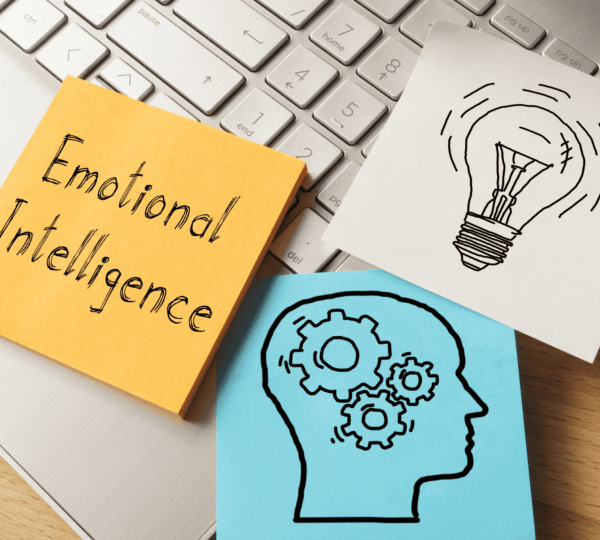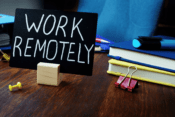
How to Adapt to Changing Work Environments
Did you know that 70% of employees worldwide experienced significant changes in their work environments between 2020 and 2023, according to a recent Gallup study? This shift includes everything from the rise of remote work and hybrid schedules to the integration of advanced technologies like artificial intelligence and automation. These changes have redefined how we communicate, collaborate, and perform our jobs.
Adapting to a changing work environment has become an essential skill in today’s world. Whether it’s transitioning to remote work, learning new software, or adjusting to a company’s restructuring, employees must embrace flexibility and resilience to thrive. Yet, adaptation isn’t always easy. It often involves navigating uncertainties, overcoming resistance, and developing new skills.
Experts emphasize the importance of a growth mindset in adapting to change. Carol Dweck, a renowned psychologist, explains that individuals with a growth mindset—those who see challenges as opportunities for learning—are more likely to succeed in dynamic environments. Companies that foster this mindset among employees also benefit from increased innovation, collaboration, and productivity.
From embracing new technologies to improving communication skills and managing stress effectively, this post will provide practical insights to help you not only survive but thrive in today’s ever-evolving workplace.
Why Adaptability Matters in the Modern Workplace
Adaptability is no longer a nice-to-have skill, it’s essential. According to a report by Harvard Business Review, the ability to pivot and embrace change ranks among the top competencies employers seek in their workforce. Businesses evolve to meet market demands, integrate new technologies, and navigate economic uncertainties, and employees need to align with these shifts to remain relevant.
Consider the seismic changes brought by the COVID-19 pandemic. Remote work became a necessity almost overnight, forcing companies and employees to adapt their processes, communication styles, and even job roles. Those who thrived embraced change, found new ways to collaborate, and upskilled to stay ahead.
Moreover, the nature of jobs is evolving. Roles are becoming more cross-functional, requiring employees to wear multiple hats. For instance, marketing professionals now need to understand data analytics, while project managers are expected to be well-versed in collaboration tools like Asana or Trello. The workplace of tomorrow demands employees who can learn, unlearn, and relearn quickly.
Understanding Trends in Changing Work Environments
1. Hybrid Work Models
The rise of hybrid work is reshaping traditional office norms. Employees now split their time between working remotely and on-site. According to Forbes, 74% of companies in North America have either adopted or plan to adopt a hybrid model.
Hybrid work isn’t just a logistical shift; it requires a mindset change. Employees must learn to balance autonomy with accountability while staying connected to their teams.
To adapt:
- Prioritize communication tools: Use platforms like Slack, Microsoft Teams, or Zoom to maintain seamless communication with colleagues.
- Create a dedicated workspace: Even if you work from home part-time, a distraction-free zone boosts productivity.
- Set clear boundaries: Establishing work hours ensures that your personal and professional lives don’t blur.
2. Increased Focus on Employee Wellness
Employee wellness programs have expanded beyond gym memberships. From mental health resources to flexible hours, companies are investing in holistic wellness initiatives to improve morale and productivity.
A 2023 report by McKinsey revealed that 68% of employees are more likely to stay with a company that prioritizes wellness. Initiatives like meditation breaks, mental health support, and even financial planning workshops are becoming the norm.
To adapt:
- Leverage available resources: Participate in workshops, counseling sessions, or fitness programs offered by your employer.
- Communicate your needs: If your workplace doesn’t prioritize wellness, speak up and suggest initiatives.
- Stay proactive: Incorporate mindfulness or physical activity into your daily routine to improve focus and reduce stress.
3. Integration of Technology
Automation, artificial intelligence, and machine learning are revolutionizing job roles. From chatbots handling customer inquiries to AI-driven analytics streamlining decision-making, technology is making many traditional tasks obsolete while creating new opportunities.
For instance, customer service representatives now collaborate with AI-powered bots to resolve queries faster. Similarly, data analysts rely on AI tools to process vast datasets.
To adapt:
- Upskill regularly: Take online courses or attend workshops to learn new tools like Power BI, Tableau, or programming languages.
- Collaborate with tech-savvy colleagues: Partnering with peers who understand emerging tools can accelerate your learning curve.
- Embrace AI as a partner, not a competitor: Understand how AI can complement your work rather than fear its implications.
Practical Strategies for Adapting to Change
1. Cultivate a Growth Mindset
Carol Dweck’s research on mindset underscores that individuals who believe they can improve through effort are more likely to succeed. Instead of resisting change, view it as an opportunity to learn and grow.
2. Stay Informed
Keeping up with industry trends and workplace innovations prepares you for what’s next. Subscribe to reputable business blogs like Inc., Business Insider, and Fast Company, or join LinkedIn groups in your field.
3. Network Actively
Adapting to change is easier when you have a robust support system. Attend industry events, webinars, or networking meetups to build connections. Your peers often provide insights and guidance that can help navigate transitions.
4. Develop Emotional Intelligence
Workplace change can trigger anxiety or resistance. Emotional intelligence helps you manage these emotions and empathize with colleagues who may also be struggling.
5. Set Small, Achievable Goals
When faced with significant change, break it down into manageable steps. For instance, if learning a new software tool is required, start with basic tutorials before diving into advanced features.
6. Embrace Continuous Learning
Platforms like Coursera, Udemy, and LinkedIn Learning offer courses on almost every professional skill imaginable. By investing in learning, you remain prepared for future changes in the workplace.
7. Seek Feedback
Feedback is a powerful tool for growth. Regularly ask your manager or peers for input on your adaptability and skills. Constructive criticism helps you identify areas for improvement.
How Employee Wellness Trends Complement Adaptability
Employee wellness programs aim to create resilient employees who can handle change effectively. For example, mindfulness training and stress management sessions equip workers to navigate high-pressure situations with ease.
A 2023 study from McKinsey revealed that organizations with robust wellness programs report higher adaptability and employee satisfaction rates. Companies like Google and Salesforce have taken the lead in offering generous wellness benefits, from on-site meditation rooms to career coaching.
Steps to Align Yourself with These Trends:
- Explore apps like Calm or Headspace for mindfulness.
- Make use of wellness stipends for activities like yoga or gym memberships.
- Advocate for mental health resources at your workplace if they don’t exist.
Final Thoughts: Embracing Change as a Path to Growth
Change is inevitable, especially in the dynamic world of work. By cultivating a growth mindset, staying informed, and taking proactive steps to adapt, you can thrive in any environment. Much like my sushi experience, the process might feel uncomfortable at first, but it opens the door to discoveries you never imagined.
So, how will you tackle your next workplace change? Dive in, stay curious, and make it an adventure worth remembering.
References
- Harvard Business Review: “Why Adaptability Is the Most Important Skill for the Future of Work.”
- Forbes: “The Future of Hybrid Work: Trends to Watch in 2024.”
- McKinsey: “The State of Employee Wellness Programs in Modern Workplaces.”
- Inc.: “How to Stay Ahead in a Rapidly Changing Workplace.”
- Fast Company: “The New Rules of Work: How to Succeed in a Hybrid Environment.”











